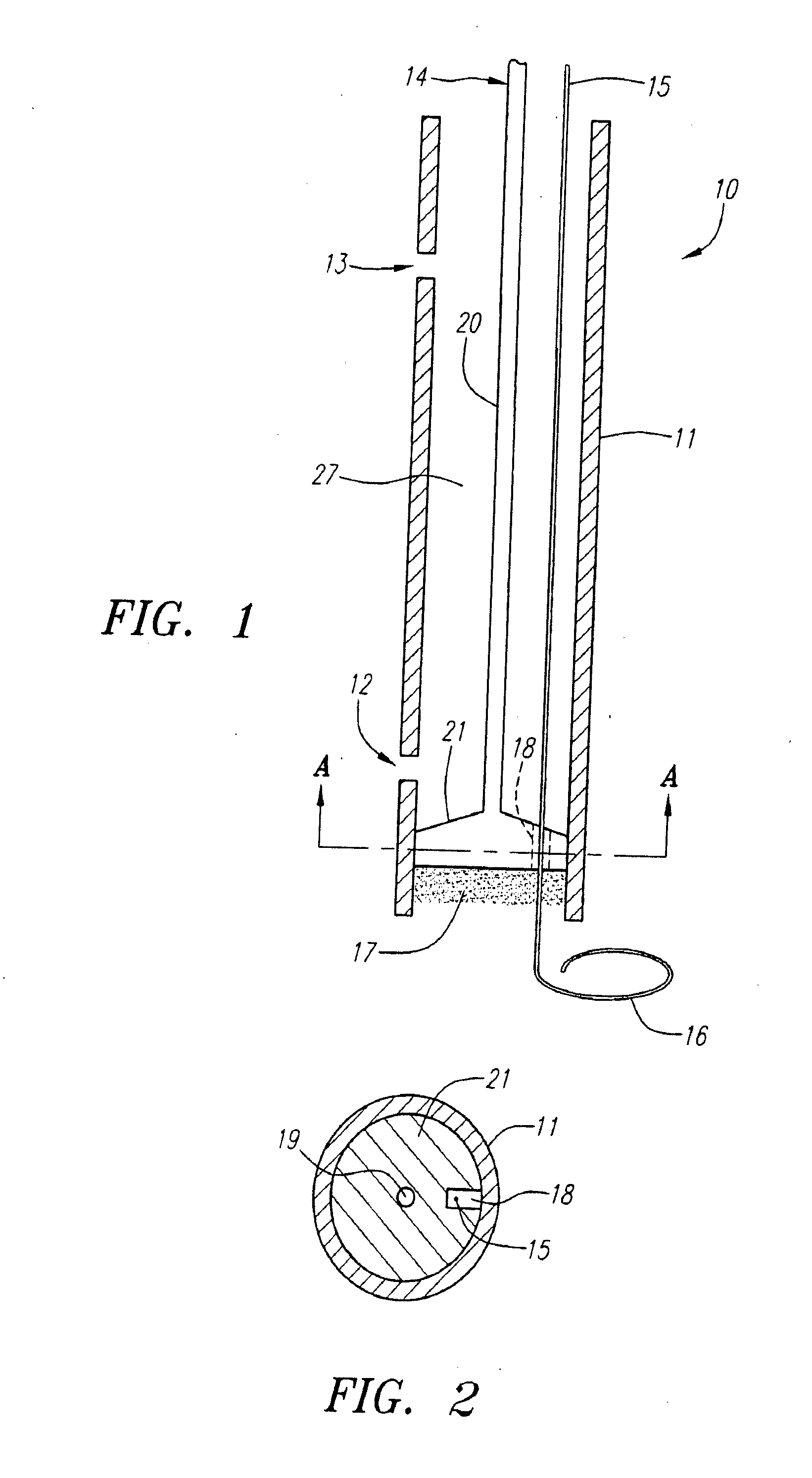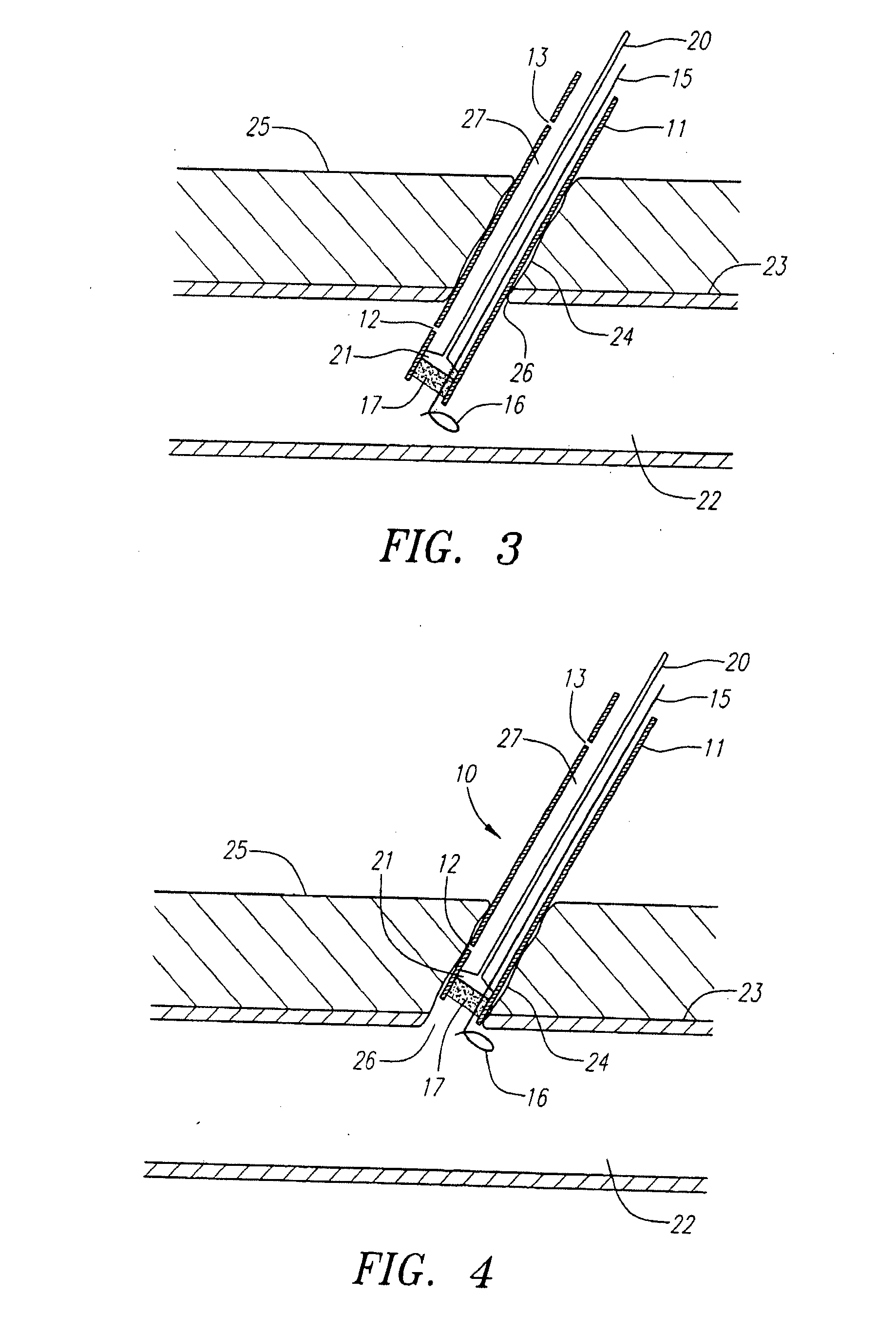Locator and delivery device and method of use
a technology of a locator and a delivery device, which is applied in the field of locators and delivery devices and methods of use, can solve the problems of time-consuming and expensive procedures, requiring as much as an hour of the physician's or nurse's time, and uncomfortable for patients
- Summary
- Abstract
- Description
- Claims
- Application Information
AI Technical Summary
Benefits of technology
Problems solved by technology
Method used
Image
Examples
Embodiment Construction
[0039]FIG. 1 illustrates in a somewhat schematic form many of the features of the device of the present invention. The device 10 includes a delivery tube 11 which is provided with a distal port 12 and a proximal port 13. An obturator 14 is housed within the delivery tube 11 and comprises a shaft 20 and a larger diameter distal portion 21. The device 10 is also provided with a guidewire 15 which has a transversely extending distal portion 16. The device is also provided with a sealing element 17 which is preferably formed from a felt, hydrogel, or other material suitable for use in sealing punctures or other openings communicating with body lumens, such as blood vessels.
[0040]FIG. 2 is a cross-sectional view of the device shown in FIG. 1 taken on line A-A. As can be seen from FIG. 2, the distal portion 21 of the obturator 14 is provided with a groove 18 which serves as a passageway for the guidewire 15. In addition, the obturator 14 is provided with a lumen 19 (not shown in FIG. 1) ...
PUM
 Login to View More
Login to View More Abstract
Description
Claims
Application Information
 Login to View More
Login to View More - R&D
- Intellectual Property
- Life Sciences
- Materials
- Tech Scout
- Unparalleled Data Quality
- Higher Quality Content
- 60% Fewer Hallucinations
Browse by: Latest US Patents, China's latest patents, Technical Efficacy Thesaurus, Application Domain, Technology Topic, Popular Technical Reports.
© 2025 PatSnap. All rights reserved.Legal|Privacy policy|Modern Slavery Act Transparency Statement|Sitemap|About US| Contact US: help@patsnap.com



